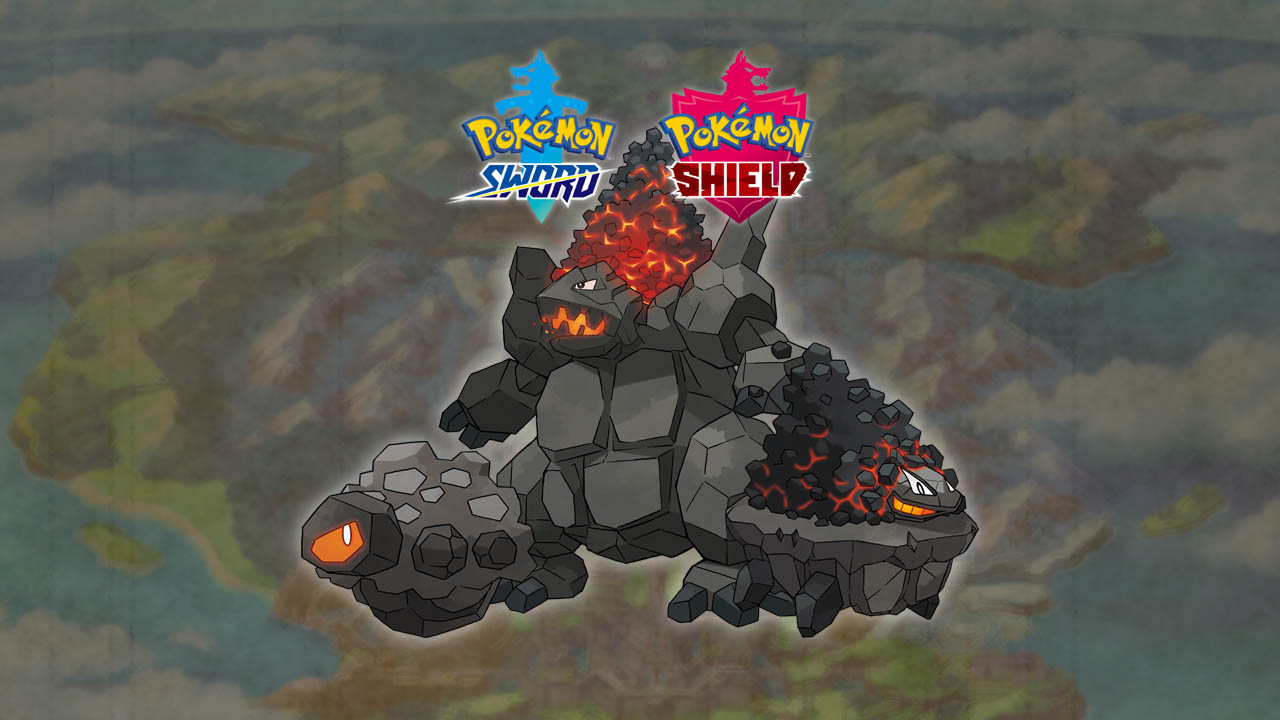In this recurring series, I’ll analyze the origins of Pokémon designs, their culture, and their historical allusions to British culture.
Rolycoly
Before the games’ release we were introduced to Rolycoly in one of the trailers, and its design inspirations were quickly apparent.
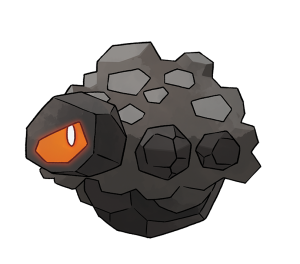
Coal is a fascinating basis for a Pokémon, and its cultural relevance to England makes it the perfect time to introduce what seems to be a low-level Rock-type Pokémon to the series.
For the individual household, coal was an important way to keep people warm during the winter months. They’d often get deliveries of coal and burn them in a coal stove.
While the combustive properties of coal had long been known, the need to harness their energy was not needed much until the Industrial Revolution required massive amounts of energy to power new machines and turn water into steam.
The Industrial Revolution is a period between the late 18th to the early 19th century, with a second Industrial Revolution during the late 19th century which further improved steel processes and allowed for electricity generation on a large scale.
However, the widespread burning of coal had negative health effects on those living nearby. Coal soot created air pollution and led to higher rates of infant mortality and the development of black lung. The environmental movement started primarily to reduce the amount of coal pollution.
Today, coal usage and mining is decreasing. The knowledge that coal burning is having an adverse effect on the planet’s climate has led many governments to invest into alternative energy sources and create goals to close down coal plants over the next decades.
This is the story of coal, and the story of Rolycoly. The Pokemon website states:
Most of its body has the same composition as coal. Fittingly, this Pokémon was first discovered in coal mines about 400 years ago.
It can race around like a unicycle, even on rough, rocky terrain. Burning coal sustains it.
We learn that Rolycoly is able to roll around as its body physically contains a smooth piece of coal. It was able to help families with heating, presumably by heating the Pokemon’s body. Hopefully Rolycoly’s body is able to regenerate the coal that is burned off. But as it has Heatproof as an ability, this process is probably not painful.
In the description, we see that a hundred years ago, the Pokemon world must have realized the implications of burning coal and taken steps to stop it. We’ve previously seen modern energy generation place like Alola’s Geothermal Power Plant. Wind power is popular in present day UK, although there didn’t appear to be an equivalent in Galar.
Rolycoly is a popular Pokemon to find in caves, as Great Britain had a large number of coal deposits throughout the nation. They employed hundreds of thousands to extract them from deep caverns, with the employed often including children. Many later closed a century later once the coal sources were completely exhausted.
Carkol
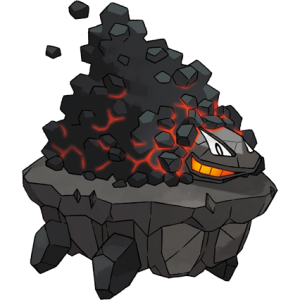
Rolycoly evolves into Carkol, whose design is based on minecarts that moved ore along rails to extract the resources. Its name is a combination of “cart” and “coal” while also sounding similar to charcoal, a carbon residue that is often leftover from burning wood. Similar to Rolycoly, it rolls using the stone appendages.
This line Steam Engine as a second ability, which boosts its speed three stages when bit by a Water or Fire-type move. This alludes to the rise of steam as a means to generate mechanical movement and electricity used to power major changes in the Industrial Revolution.
It forms coal inside its body. Coal dropped by this Pokémon once helped fuel the lives of people in the Galar region.
By rapidly rolling its legs, it can travel at over 18 mph. The temperature of the flames it breathes exceeds 1,800 degrees Fahrenheit.
There’s a certain grade of coal known as metallurgical coal, or coking coal. When it’s baked in an oven without oxygen at a temperature of 1,800 degrees Fahrenheit, it produces a refined fuel known as coke. This fuel is used in industries such as iron ore smelting to produce metal materials including steel. It’s entirely possible that Carkol’s body is made up of metallurgical coal and is able to produce coke as its own by-product, allowing Galar to quickly develop its smithing industry.
Coalossal
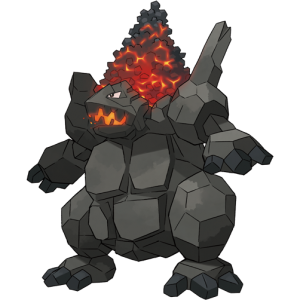
Coalossal evolves to become a bipedal golem, while its supply of coal remains strapped to its back. Its name combines “coal” with “colossal”, an apt name to describe a 9-foot tall Pokémon made of coal.
The Coalossal line’s shiny forms have a blue hue, which contrasts from its regular dark coloring. This may be a reference to anthracite, a dense form of coal that is known as the best ranking of coal. Blue coal was a particular brand name for coal that was dyed blue to distinguish it from competitors. While the company went bankrupt in the 1970s, there are still historical signs available online.
It may also allude to diamonds, which is made of the same element as coal: carbon. When its atoms are arranged in a crystalline structure, diamonds form. This happens naturally in areas where carbon deposits undergo intense pressure over a long time, often a billion years or longer.
Diamonds are valued for their visual aesthetic, but are also the hardest natural material that exists. Diamonds may have a blueish hue from impurities, often Boron mixed in with the carbon, although diamonds may have other colors as well. While the colors have shifted in these Pokémon, their bodies reflectivity don’t change to reflect diamonds.
It’s usually peaceful, but the vandalism of mines enrages it. Offenders will be incinerated with flames that reach 2,700 degrees Fahrenheit.
While it’s engaged in battle, its mountain of coal will burn bright red, sending off sparks that scorch the surrounding area.
Coalossal burns intensely during matches, reaching temperatures far higher than even Carkol. At that temperature, one is able to convert iron oxide into metallic iron through smelting, removing impurities and leaving a strong base metal for further smithing. As such, Coalossal was likely an invaluable partner for medieval blacksmiths.
Coalossal’s signature move is Tar Shot, a Rock-type attack that drops the opponent’s speed and doubles the damage dealt by Fire-type attacks. The opponent is covered in tar, a liquid made from coal as a byproduct of coke production. As a thick liquid, it can easily cover ones skin and has been used as a sealant for sealing roads against environmental damage. As a carbon-based substance, it is highly flammable and has been used for heating.
Gigantamax Coalossal
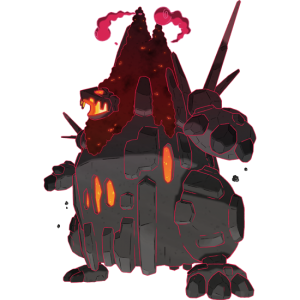
Coalossal may be able to Gigantamax, turning into a massive mountain of coal. It’s body turns into a large furnace, ingesting its coal and turning it into energy.
Its body is a colossal stove. With Gigantamax energy stoking the fire, this Pokémon’s flame burns hotter than 3,600 degrees Fahrenheit.
When Galar was hit by a harsh cold wave, this Pokémon served as a giant heating stove and saved many lives.
The ability for it to generate heat has saved many lives during what was likely the Little Ice Age that impacted Europe through the years between the sixteenth to nineteenth centuries. Since then, the global average temperature has risen dramatically.
It learns the G-Max move G-Max Volcalith, which generates volcanic rocks to deal chip damage to the opposing team each turn.
Conclusion
Overall, the design of Rolycoly and its evolutionary forms has a lot of thought behind it. Its description directly relates to the rise coal in British history and the Industrial Revolution that it enabled. As it evolves, its signature move shows a high degree of detail paid to the byproducts of coal and its uses beyond just a fuel source.
Let us know what you think of this evolutionary line in the comments below or on Discord!

